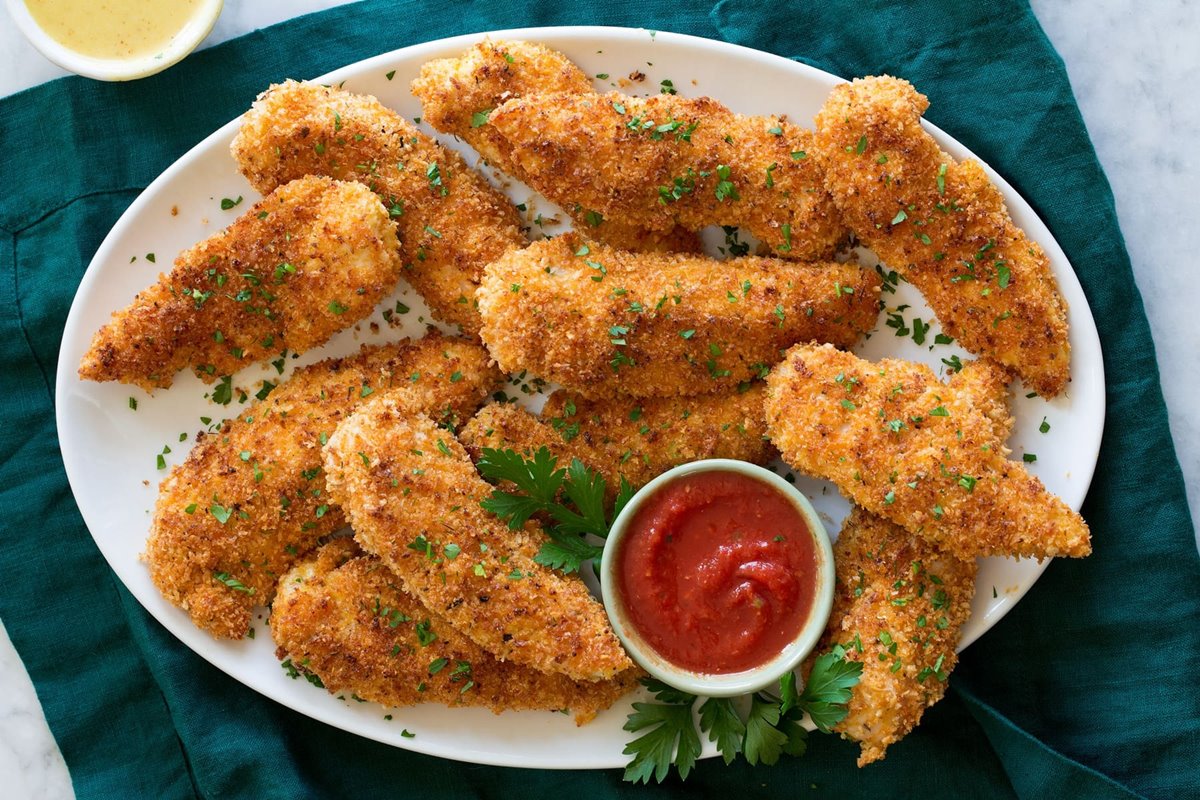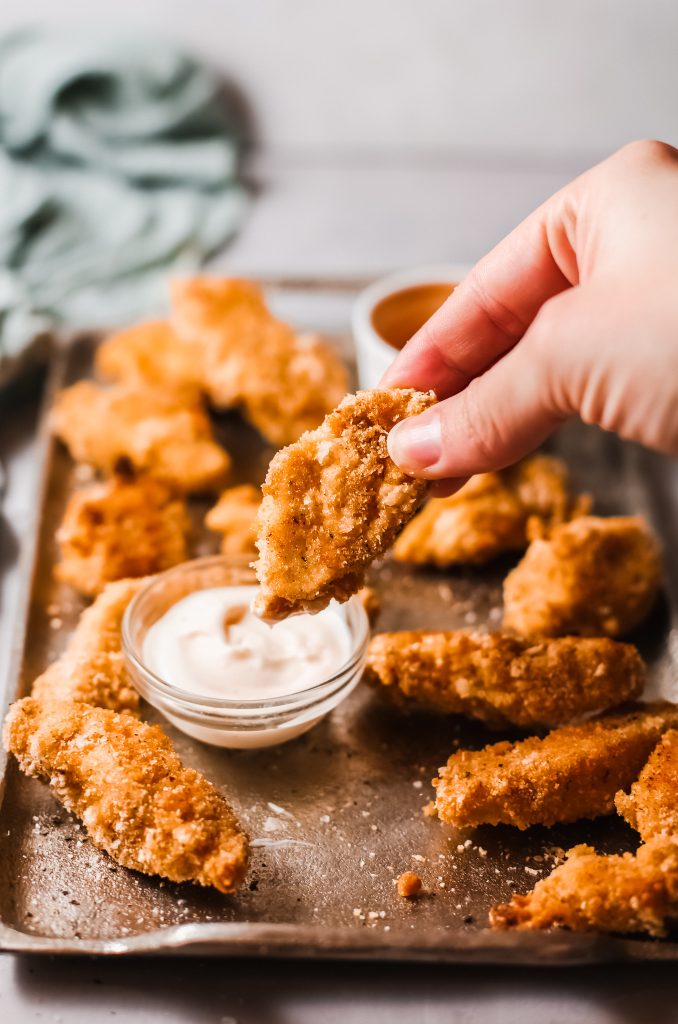How to Cook Chicken Tenders on the Stove: A Step-by-Step Guide
I. Introduction to Cooking Chicken Tenders on the Stove

A. Exploring a Quick and Delicious Meal Option Cooking chicken tenders on the stove is a convenient and flavorful way to prepare a quick and delicious meal. This method allows for even cooking and can be easily adapted to suit various seasoning and flavor preferences.
B. Benefits of Stove Cooking for Chicken Tenders Cooking chicken tenders on the stove offers several benefits. It allows for precise temperature control, promotes even cooking, and helps retain the natural juices of the chicken tenders. Stove cooking also provides the opportunity to customize flavors and experiment with different seasonings and techniques.
II. Preparing the Chicken Tenders
A. Seasoning and Marination Options
- Basic Salt and Pepper Seasoning Begin by seasoning the chicken tenders with a pinch of salt and pepper. This simple seasoning enhances the natural flavor of the chicken while allowing the other flavors to shine.
- Flavorful Marinades for Enhanced Taste For a more savory or tangy taste, marinating the chicken tenders in a mixture of herbs, spices, and marinade ingredients can add depth of flavor. Popular marinades include teriyaki, lemon-garlic, or honey-mustard.
B. Properly Trimming and Slicing the Chicken Tenders

- Removing Excess Fat and Connective Tissue Before cooking, trim any excess fat or connective tissue from the chicken tenders. This ensures a cleaner and more tender final product.
- Slicing into Evenly Sized Pieces If the chicken tenders are large or unevenly sized, consider slicing them into equally sized pieces. This promotes even cooking and prevents some pieces from overcooking while others remain undercooked.
III. Preheating and Choosing the Cooking Pan
A. Preheating the Pan for Optimal Cooking
- Ensuring Proper Heat Distribution Preheating the pan before adding the chicken tenders ensures even heat distribution and helps prevent sticking. This step is important for achieving a golden-brown sear on the outside of the chicken.
- Testing the Heat with Water Droplets To test if the pan is properly preheated, sprinkle a few drops of water onto the surface. If the water sizzles and evaporates immediately, the pan is ready for cooking.
B. Selecting the Right Type of Pan
- Non-Stick or Cast Iron Options When choosing a pan for stove cooking, non-stick or cast iron pans are popular options. Non-stick pans prevent sticking and make cleanup easier, while cast iron pans provide optimal heat retention and a desirable sear.
- Considerations for Pan Size and Depth Select a pan that comfortably fits the chicken tenders without overcrowding. Overcrowding the pan can lead to uneven cooking and prevent the chicken from browning properly.
IV. Cooking the Chicken Tenders
A. Adding Oil or Butter to the Pan
- Coating the Pan for Preventing Stickiness Add a small amount of oil or butter to the preheated pan to prevent the chicken tenders from sticking. This helps create a nice sear and adds flavor to the chicken.
- Choosing the Right Type of Cooking Fat Consider using a cooking fat with a high smoke point, such as vegetable oil or clarified butter. These fats can withstand high heat without burning and impart a pleasant flavor to the chicken.
B. Searing and Cooking the Chicken Tenders
- Placing Tenders in the Pan and Searing One Side Carefully place the chicken tenders in the preheated and oiled pan, ensuring they are not too crowded. Allow them to sear undisturbed for a few minutes until golden brown on one side.
- Flipping and Cooking the Other Side until Fully Cooked Once the chicken tenders have achieved a golden-brown sear, flip them over using tongs or a spatula. Continue cooking on the other side until the chicken is fully cooked and reaches a safe internal temperature.
V. Checking for Doneness and Resting the Chicken
A. Using a Meat Thermometer to Check Internal Temperature

- Ensuring Chicken Tenders Reach Safe Cooking Temperature To ensure that the chicken tenders are cooked thoroughly, use a meat thermometer to check the internal temperature. The chicken should reach a minimum temperature of 165°F (74°C) to ensure it is safe to eat.
- Recommended Temperature for Juicy and Tender Chicken For the most juicy and tender chicken tenders, aim to cook them until they reach an internal temperature of 160°F (71°C). The residual heat will continue to cook the chicken and bring it to the recommended safe temperature.
B. Allowing the Chicken Tenders to Rest
- Retaining Juices and Enhancing Flavor After cooking, allow the chicken tenders to rest for a few minutes before serving. This resting period allows the juices to redistribute throughout the meat, resulting in a more flavorful and tender final product.
- Resting Time for Optimal Texture and Taste Rest the chicken tenders for at least 5 minutes, loosely covered with foil. This short resting time helps retain moisture and ensures optimal texture and taste when served.
VI. Serving Suggestions and Flavor Variations
A. Pairing Chicken Tenders with Dipping Sauces
- Classic Choices like Barbecue or Honey Mustard Serve chicken tenders with classic dipping sauces like barbecue sauce, honey mustard, or ranch dressing. These sauces complement the flavors of the chicken and add an extra layer of deliciousness.
- Exploring Unique Homemade Sauce Recipes Experiment with homemade sauce recipes to elevate the flavor of the chicken tenders. Try options like spicy buffalo sauce, tangy tzatziki, or sweet and sour sauce for a unique and personalized touch.
B. Adding Seasonings and Herbs for Flavor Boost
- Sprinkling Fresh Herbs for a Fragrant Taste Add a sprinkle of fresh herbs like parsley, cilantro, or basil to the cooked chicken tenders for a burst of freshness and fragrance. These herbs can enhance the overall flavor profile and add visual appeal.
-
Experimenting with Spices for Different Flavors Try different spice combinations to add variety to the chicken tenders. Options like smoked paprika, cajun seasoning, or garlic and onion powder can provide different flavor profiles and spice levels.
In conclusion, cooking chicken tenders on the stove is a quick and delicious meal option that can be easily mastered. Properly preparing the chicken tenders, preheating the pan, and choosing the right cooking fat are essential steps. Searing and cooking the chicken tenders on both sides until fully cooked ensures juicy and flavorful results. Checking for doneness using a meat thermometer and allowing the chicken tenders to rest before serving are crucial for optimal texture and taste. Pairing with dipping sauces and adding flavor variations further enhance the meal experience. By following these steps, anyone can enjoy homemade stove-cooked chicken tenders that are tender, flavorful, and perfect for any occasion.
